What Grits for Knife Sharpening: Best Practices for Knife Care
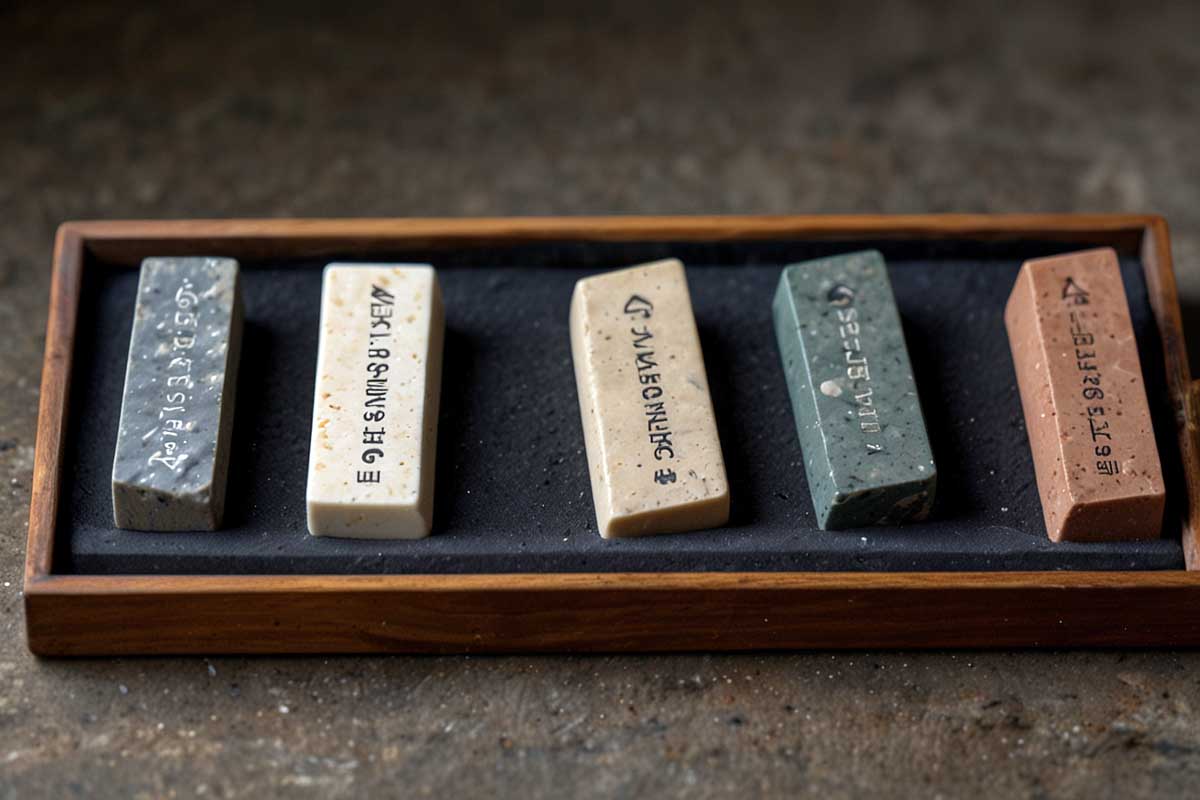
Grits for knife sharpening range from coarse (100-1000) for repairing and shaping, medium (1000-3000) for regular sharpening, fine (4000-8000) for honing, to superfine (8000+) for a mirror finish.
When it comes to what grits for knife sharpening, choosing the right grit is crucial for achieving the best results. Grit sizes directly affect how sharp your knife can get and how smooth the blade edge will be. Understanding the relationship between grit sizes and the final outcome helps you make informed decisions in your knife maintenance routine.
Using sharpening stones with different grit numbers allows you to move from repairing a damaged edge to refining a razor-sharp finish. In this article, I’ll share insights on various grit sizes and how they impact your sharpening process.
Understanding Grit Numbers
What Grit Numbers Mean
Grit numbers indicate the coarseness or fineness of the abrasive particles on a sharpening stone. These numbers range from very low (coarse) to very high (fine). Here’s a breakdown of what each category does:
- Coarse grit (220 and below): Repairs and reshapes damaged or dull edges.
- Medium grit (between 300 to 1000): Refines the edge and removes the roughness from coarse sharpening.
- Fine grit (2000 and above): Polishes and hones the edge to achieve razor-sharpness.
Coarse Grit
A coarse grit stone, typically 220 grit or lower, is used when your knife is very dull or has chips in the blade. This stage is all about removing a lot of material quickly to create a new edge. While it’s effective for significant repairs, it also leaves a rough surface on the blade.
Medium Grit
Moving to a medium grit stone, usually in the range of 300 to 1000 grit, is the next step. This grit smooths out the rough edge created by the coarse stone and begins to refine the sharpness. For many knives, stopping at a medium grit is sufficient for most cutting tasks. It’s a good balance between sharpness and edge retention.
Fine Grit
Fine grit stones, ranging from 2000 grit and above, are used for honing and polishing. At this stage, you’re not removing much material but instead refining the edge to a razor-sharp finish. This is ideal for knives that need to be extremely sharp, such as those used for precise cutting tasks.
Understanding these grit numbers and their purposes will help you choose the right stones for maintaining your knives. Using the right sequence of coarse, medium, and fine grits ensures your knives remain sharp and functional.
Coarse Grits (100-1000)
When to Use Coarse Grits
Coarse grits are essential for a few specific situations. When your knife has a damaged edge, such as chips or deep nicks, a coarse grit stone is necessary for repairing edges. This grit level is also crucial for initial sharpening if the knife is extremely dull and needs a lot of material removed to establish a new edge.
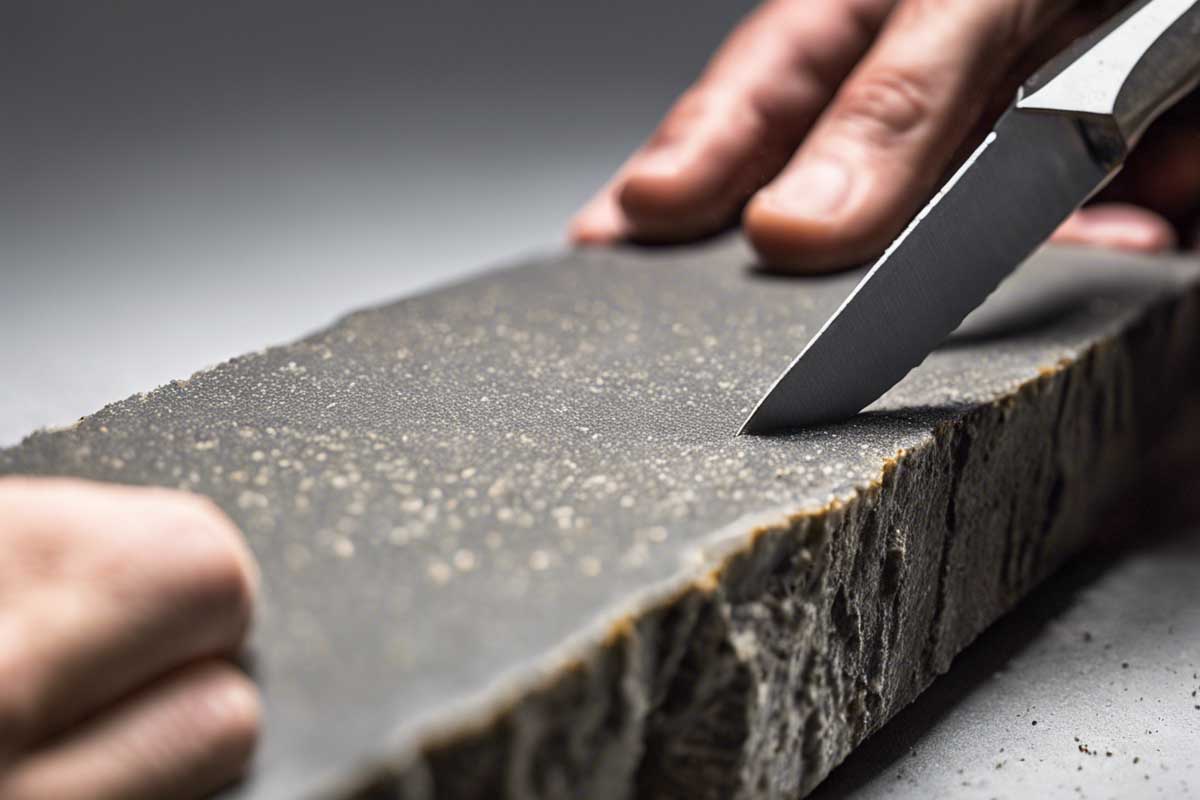
Here’s when you should reach for coarse grits:
- Repairing edges with chips or significant damage.
- Initial sharpening for very dull knives.
- Reshaping the edge angle or correcting a misaligned edge.
Using coarse grits helps restore the basic shape and sharpness of the blade before moving on to finer grits for further refinement.
Medium Grits (1000-3000)
Best Uses for Medium Grits
Medium grits are perfect for regular sharpening and refining the edge after using coarse stones. These grits smooth out the rough surface left by coarse stones and start to hone the blade to a functional sharpness.
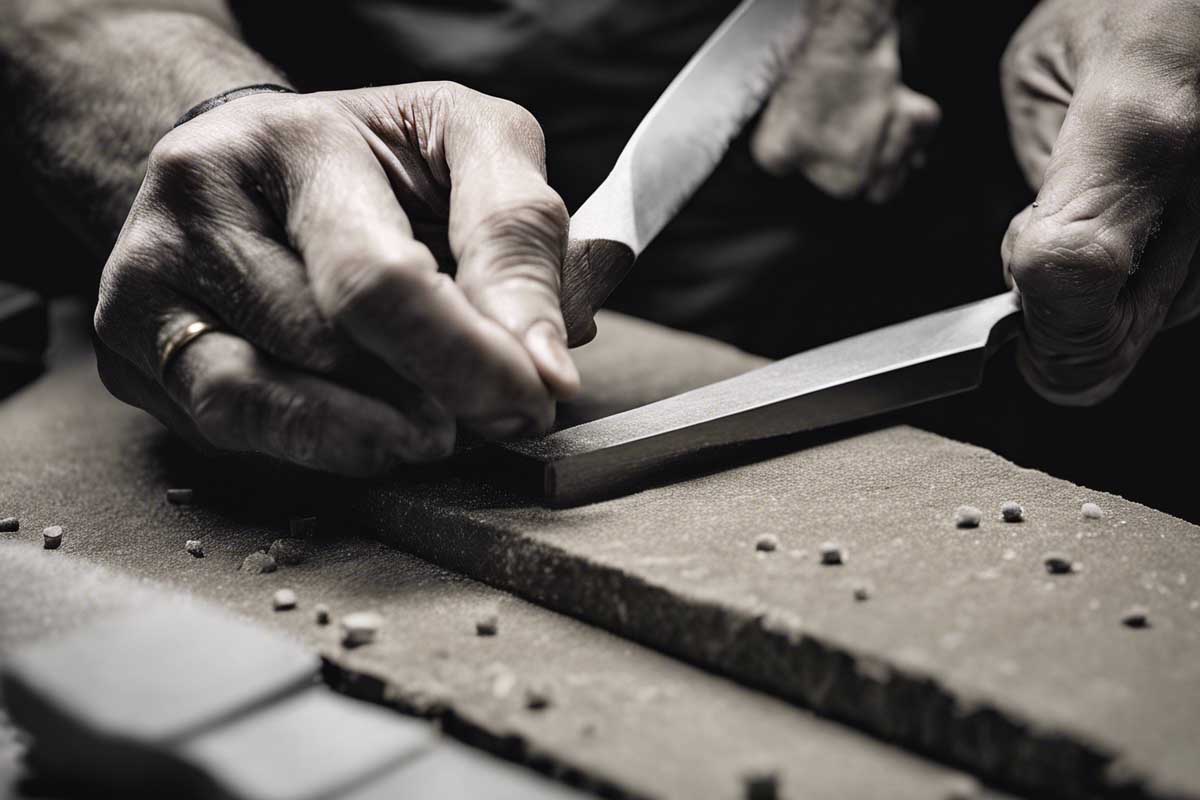
Here’s how to use medium grits effectively:
- Regular sharpening to maintain a knife’s edge.
- Refining the edge after coarse sharpening, creating a smoother and sharper blade.
- Preparing the blade for final polishing with finer grits.
Medium grits strike a good balance, providing enough abrasion to sharpen effectively while also beginning to polish the edge.
Fine Grits (4000-8000)
Benefits of Fine Grits
Fine grits are used to achieve a very sharp edge and a polished edge. These stones are ideal for honing the blade to its final sharpness, making it exceptionally smooth and effective for precise cutting tasks.
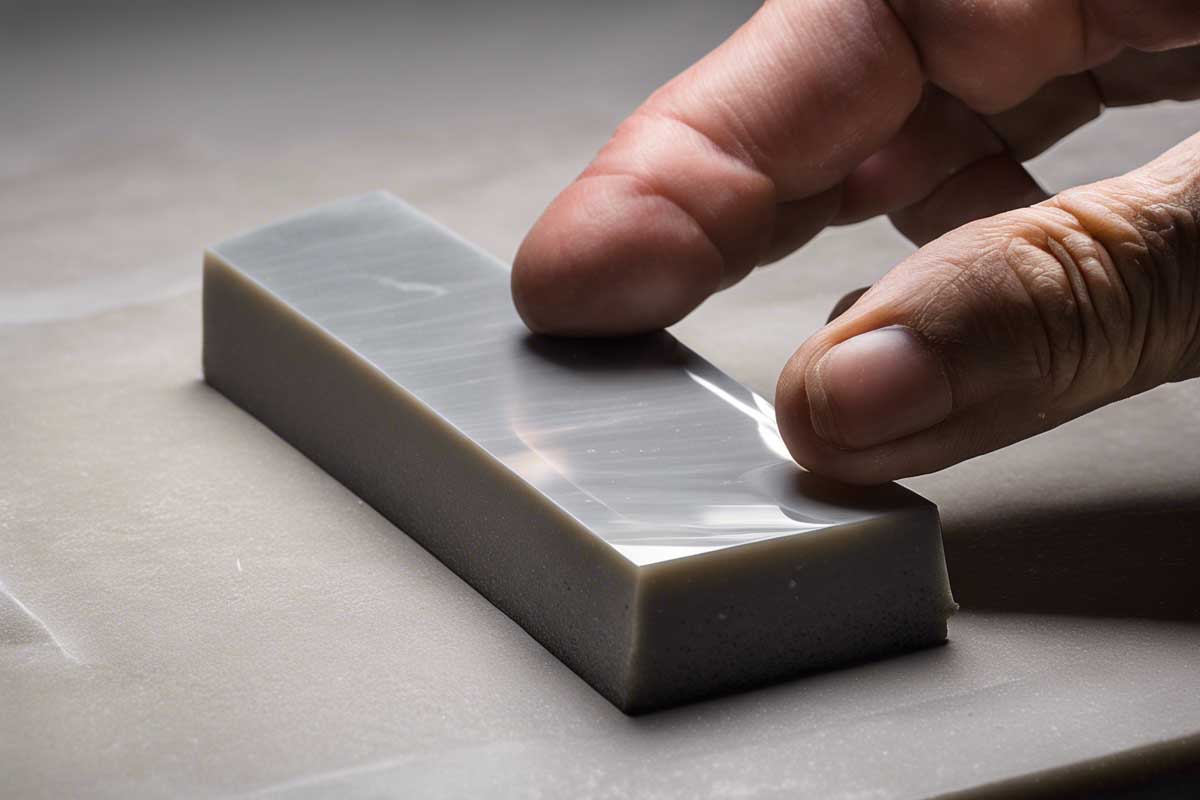
Benefits of using fine grits include:
- Creating a sharp edge that can handle detailed and delicate tasks.
- Producing a polished edge that cuts cleanly and smoothly.
- Enhancing the knife’s overall performance and longevity by maintaining a finely honed edge.
Using fine grits ensures your knife reaches its peak sharpness and efficiency, suitable for tasks that require precision.
Superfine Grits (8000+)
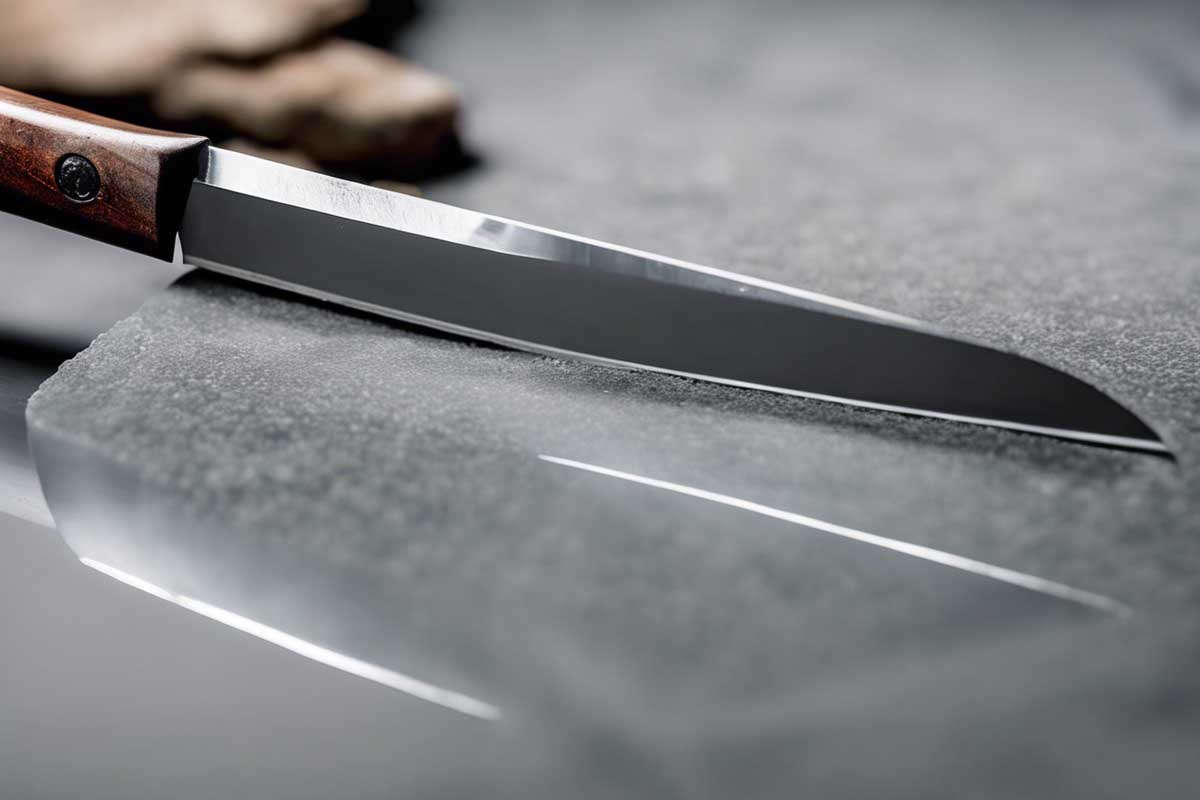
Specialty Uses for Superfine Grits
Superfine grits are typically used for specialty applications where an ultra-fine, mirror finish is desired. These grits are not necessary for everyday knife sharpening but are valuable for those who seek the ultimate polish.
When to use superfine grits:
- Achieving a mirror finish on the blade, which looks impressive and can reduce friction during cutting.
- Specialty uses like finishing high-end knives or for enthusiasts who want their blades to be exceptionally sharp and polished.
- Final honing stage for tools that require an extremely smooth and sharp edge.
Using superfine grits is about perfecting the blade to the highest possible standard, making it a step beyond standard sharpening practices.
Choosing the Right Grits for Knife Sharpening
Selecting the right grit depends on your knife type and sharpening needs. Here’s a straightforward guide to help you make the best choice.
By Knife Type
- For regular maintenance, start with a medium grit (1000-3000) and finish with a fine grit (4000-8000).
- If the edge is damaged, begin with a coarse grit (100-1000) to repair and reshape.
Outdoor Knives:
- These knives often encounter tougher materials and may need more frequent sharpening.
- Use a medium grit for regular sharpening and a coarse grit for repairing any chips or severe dullness.
- Finish with a fine grit for a sharp edge.
Specialty Knives (e.g., Japanese knives):
- Start with a medium grit for sharpening and progress to a fine grit.
- For achieving a very sharp, polished edge, use superfine grits (8000+).
By Sharpening Needs
Routine Maintenance:
- Use a medium grit to keep the edge sharp.
- Follow with a fine grit to maintain a polished edge.
Repairing Damaged Edges:
- Start with a coarse grit to remove chips and reshape the edge.
- Progress to a medium grit to smooth out the rough edge.
- Finish with a fine grit for a refined sharpness.
Achieving High Sharpness:
- Begin with a medium grit to sharpen the edge.
- Move to a fine grit for honing.
- Use superfine grits for an ultra-sharp, mirror finish if desired.
Step-by-Step Process
Assess the Knife:
- Check for damage or dullness.
- Determine the knife type and intended use.
Select the Starting Grit:
- Use a coarse grit for damaged edges.
- Use a medium grit for regular sharpening.
Sharpening Sequence:
- Start with the chosen grit to address the primary sharpening need.
- Move to finer grits progressively to refine and polish the edge.
By choosing the right grit based on your knife type and sharpening needs, you ensure that your knives remain in optimal condition for their intended use. This step-by-step approach makes the process clear and effective, providing confidence in maintaining your blades.
FAQs on Grits for Knife Sharpening
Bottom Lines on the Grits for Knife Sharpening
Selecting the right grit is crucial for effective knife sharpening and knife maintenance. Start with a coarse grit for repairing damaged edges.
Use a medium grit for regular sharpening and refining. Finish with a fine grit for a sharp, polished edge. Superfine grits are optional but great for a mirror finish.
Understanding grit differences helps you maintain your knives properly and keeps them in top condition. Choosing the right grit ensures your knives perform well and last longer.
